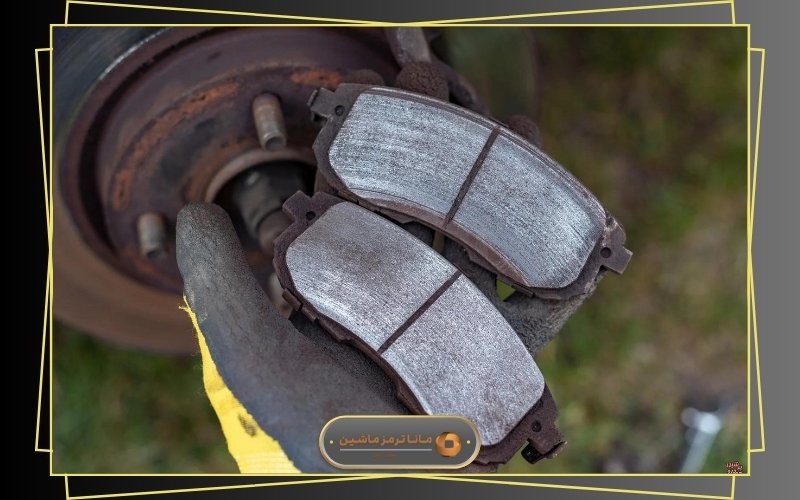You might be surprised to know that experts say brake pads are among the most critical components of a vehicle, and their failure can lead to irreversible accidents that endanger both passengers and others on the road. It’s important to note that brake pad failure isn’t limited to high-speed driving—it can also pose serious risks in urban areas and heavy traffic.
Therefore, it is strongly recommended to use high-quality brake pad brands and to have them installed by experienced mechanics. Also, pay close attention to timely replacement, and do not delay when it’s time to change them.
In this article, we will explore the causes and warning signs of brake pad failure in detail—so you can recognize the risks and take preventive action before any serious incident occurs.
Signs of Worn or Damaged Brake Pads
You may ask yourself: How can I tell when it’s time to change my brake pads? Luckily, brake pads exhibit several clear warning signs as they wear down, making it easier for drivers to recognize when maintenance is needed. Without these symptoms, the only way to know would be through diminished braking performance—which can be quite risky. Below are the most common signs of brake pad failure:
1. Unusual Noises
Brake pads are consumable parts that wear down over time. When they become overly worn, they start producing sounds like squealing, squeaking, or screeching—a common indicator that they’ve reached the end of their lifespan. If you hear such noises while driving, you should immediately have your brakes inspected and replace the pads if necessary. Sometimes these noises can also result from low-quality brake pads, in which case switching to a better brand is recommended.
2. Vehicle Pulling to One Side
As brake pads wear unevenly, they can create imbalance during braking. This results in the vehicle pulling to the left or right when you press the brake pedal. Such behavior often points to asymmetric wear or complete wear on one side. If you notice this issue, have your brake pads inspected immediately—continuing to drive with this condition is dangerous and can lead to serious accidents.
3. Changes in Brake Pedal Feel
The brake pedal itself can also reveal pad wear. When pads are worn out, the pedal may sink lower than usual or require more force to stop the car. Essentially, you might need to press the pedal all the way down to achieve the same braking effect you once got with just a light touch. While this could also indicate other issues, worn brake pads are often the primary cause. It’s best to consult a qualified mechanic for a full diagnosis.
Causes of Brake Pad Failure
Like all auto parts, brake pads have a limited lifespan and eventually require replacement. However, by choosing high-quality brake pads—those made with premium materials and advanced manufacturing—you can extend their service life and ensure better performance. That said, certain factors can still lead to premature wear. Familiarizing yourself with these causes can help you avoid them and prolong the life of your brake pads. Here are the most common reasons:
1. Warped Brake Discs
One of the major causes of early brake pad failure is warped or misshapen brake discs. Discs heat up under constant braking, and over time, this heat can cause them to lose structural integrity. If a hot disc comes into contact with cold elements like puddles or water on the road, it may warp. A warped disc surface disrupts proper contact with the brake pad, causing uneven pressure and leading to faster pad deterioration.
2. Low-Quality Brake Pads
The market offers a wide variety of brake pads, but not all meet safety or performance standards. Low-grade pads not only perform poorly but can damage other components like the brake discs, leading to higher maintenance costs. These pads typically create squealing sounds, generate excessive brake dust, and have reduced durability. In contrast, quality brake pads operate quietly, produce minimal dust, and maintain reliable performance under various driving conditions.
3. Uneven Brake Pad Installation
Improper installation—especially when brake pads are not evenly matched or aligned—is a common cause of premature wear. Over time, vehicles naturally develop slight mechanical imbalances. If these aren’t accounted for during installation, the pads will wear unevenly, leading to misalignment that worsens over time. Even a small difference of a few millimeters between the pads can significantly reduce their lifespan and potentially cause serious safety issues.


